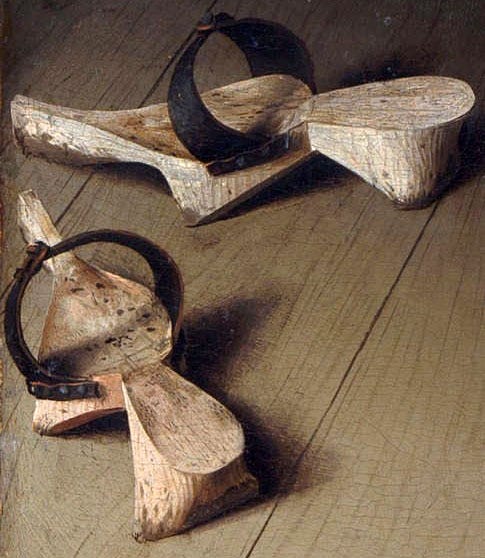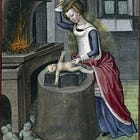Stories about Romantic Love
In Mini-Curio #3, I briefly discussed Mélusine. Whilst the focus was on her modern connection to a coffee chain, Mélusine’s story is really about love, specifically marital trust and politics. Coffee, of course, was only really in Yemen in the later Middle Ages. Love was a potion drunk everywhere.
Thinking with romantic love as a theme lets us approach magic and marvels in a narrative way. We read the cunning woman’s trial for selling love potions and erotic and romantic magic services, or the way bestiaries taught about marital love for life through elephants, and we have a history’s medieval curios in so many little storybooks. In my post on the Goddess Natura, we touched on an extremely popular tale from the later Middle Ages, Roman de la Rose, which personified all sorts, including love. Courtly love was a politicised expression of the dynamics of medieval gender relations. Tales like Tristan and Iseult bring all these ideas together.
Because love, magic, and marvels are an endlessly rich pot of posts to write, I’ve decided to try and pick at what magic meant to love. Why take a love potion? Why were love potions condemned? And, to make it less depressing, how did elephants teach medieval people that lesson? No Neoplatonism or Summa Theologica this time.
I’m going to sidestep the obvious, and simply point you this way if you want to thoroughly explore our Saint Valentine(s) and his (their(?)) love connections. Clara does a better job than I would want to try!
Love and the Magician
When introducing medieval magic, I suggested three explanations for its uses and its attractions. Love cuts to the chase regarding explanations 2 and 3: Magic to Rationalise the Future and Magic to Change the World. In that post I depicted types of magic on a coordinate map with the X-axis being Perception (Sanctioned ↔ Heretical) and the Y-Axis being Traditions (Learned/Literate ↔ Lay/Popular).
Love is so ubiquitous that it really does cross the traditions divide, though our sources for it are more often in the lay/popular side. Either way, the perception about love magic was that it was not sanctioned. Whether it was fully heretical is a bit more complex, mostly because love products (potions, charms, talismans, objects, images) and love services (magic and rituals) were just so common. Punishment did not become systematic until the Witch Craze took off in earnest, from the later fifteenth and particularly the sixteenth and seventeenth centuries.
This striking painting culminates many of the medieval ideas that were being folded into the witchcraft mythologies, through ideas of sorcery, love, beauty, and magic.1 Notice the heart in the box, dust being sprinkled upon it, alluding to control over love and the binding of a person’s free will. This image combines the lay magic and literate magic traditions—the scrolls and reams of writing populate an otherwise domestic setting, and a toy dog sits as a pet—or as a magical familiar. For late medieval standards, this woman is the height of fashion and beauty.2 We might imagine her trade as a cunning woman and sorceress was a lucrative one.
The nudity is transgressive and radical but so is the malice implied in that shadowed male gaze at the door. Is that our sorceress’ client? Perhaps it is a demon? Or a lustful rogue? Or merely any man looming over things, who at any moment held the power over life and death. Whilst our sorceress could control the world, including love, through her magic—any person had control over her life if gossip and rumour meant led to her being murdered for purported witchcraft.

Why was love magic not sanctioned? Free will. That’s why. Theologically, medieval humans with their rational souls had God-given free will.3 Love magic flies in the face of that. It is heretical (besides the usual sin superstitio and potential for maleficium and idolatria). That’s what’s interesting about it, too—did people want to give over their free will, for some faith in controlling love? Was love just that powerful?—is love that powerful?
Religious elites trying to impose theological orthodoxy had a big job, and they turned to the stake, making it a bloody one. But most laypeople weren’t think about love theologically, which across medieval society, was a complicated matter. They just wanted assurances. Magic and potions offered that.
Love Magic and Murder
Some of the earliest ‘proto-witches’ were murdered for supposed crimes including love magic and potions. Often these love-related indictments (alongside other human and social advice) seem plausible for a cunning woman selling advice and occult services and products. They’re levied en masse before the much more outlandish and radical, and witchy charges which are clearly maleficium and usually related to the devil (idolatria).
Keep reading with a 7-day free trial
Subscribe to Livres des Merveilles: Cabinets of Curiosities to keep reading this post and get 7 days of free access to the full post archives.








